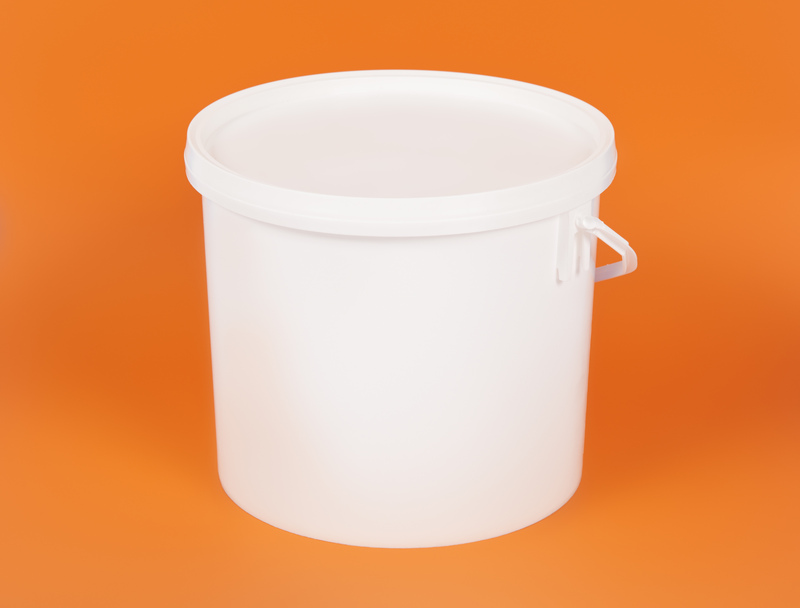How to Preserve Your Sofa: Pro Tips for Extended Storage
Posted on 18/06/2025
How to Preserve Your Sofa: Pro Tips for Extended Storage
Planning to store your couch for an extended period? Whether you're relocating, undergoing home renovations, or making room for new furniture, knowing how to preserve your sofa during long-term storage is crucial if you want your furniture investment to last. A well-maintained sofa can save you from costly replacements and restoration. This comprehensive guide will explore effective methods and expert advice to ensure your sofa stays fresh, clean, and damage-free while in storage.
Why Proper Sofa Storage Matters
Understanding how to store your couch properly is often underestimated. Leaving your furniture unprotected or in the wrong environment can lead to mold, mildew, pest infestations, warping, fading, or even structural damage. Whether your sofa is leather, microfiber, or fabric, each material requires specific care. Proactive steps ensure that upon retrieval, your sofa will be as comfortable and attractive as the day you stored it.

Preparing Your Sofa for Storage: The First Step
Before moving your sofa into storage, preparation is key. Preparation not only prevents immediate damage but also protects against long-term issues. Follow these initial steps to preserve sofa quality:
1. Clean Your Sofa Thoroughly
- Vacuum all surfaces:
- Use a brush attachment to remove dust, crumbs, and pet hair from cushions, crevices, and under cushions.
- Spot clean stains:
- For fabric sofas, use a gentle upholstery cleaner. For leather, use a leather conditioner or cleaner. Always test the cleaning product on an inconspicuous area first.
- Allow to dry completely:
- Moisture is your sofa's enemy in storage. An even slightly damp sofa can develop mold or mildew.
2. Disassemble When Possible
- Remove legs, cushions, and detachable parts:
- Place all small parts in a labeled bag attached to the sofa frame for easy reassembly.
- Wrap each part individually:
- This prevents scratches and indentations, especially for wood or metal components.
3. Clean and Protect Cushions
- For removable cushions, wash covers if possible or air them out after cleaning.
- Wrap each cushion in breathable furniture covers or cotton sheets to avoid direct exposure to dust.
Choosing the Right Storage Environment
The type of storage plays a significant role in sofa preservation. Not all storage facilities offer adequate conditions for furniture. The ideal environment for extended storage should be:
- Climate-controlled
- Dry and well-ventilated
- Free from pests
- Away from direct sunlight
1. Climate-Controlled Storage
Temperature and humidity control prevents warping, mold, and fabric deterioration. If your region experiences high humidity or extreme temperatures, a climate-controlled facility is non-negotiable.
2. Pest Prevention
Always select a storage facility with strict pest control policies. Termites, rodents, and insects can ruin your sofa fabric and internal structures.
3. Space and Positioning
- Allow airflow around your sofa by leaving space between it and the walls of your storage unit.
- Avoid stacking heavy objects on top of the sofa to prevent sagging or crushing cushions and frames.
Securing and Wrapping the Sofa
1. Choose the Right Covering Materials
- Use breathable covers like cotton sheets, canvas drop cloths, or specialty furniture covers designed for storage.
- Avoid plastic wraps as they can trap moisture and cause mildew. If you must use plastic, leave it loose to allow airflow.
2. Protect from Dust and Dirt
Cover the entire sofa, including the underside and cushions, to guard against dust accumulation during extended storage.
3. Safeguard Against Moisture
- Place silica gel packets or moisture absorbers nearby, especially in humid climates. These absorb excess moisture and help keep the area dry.
- Consider elevating your sofa on wooden pallets to keep it off the ground, which reduces the risk of condensation or accidental flooding.
Transporting Your Sofa to Storage
1. Safe Moving Techniques
- Enlist help to move the sofa, reducing the risk of injury and accidental damage.
- Use furniture sliders or a dolly when moving across floors.
- Be mindful of narrow doors, hallways, and sharp corners--these can snag upholstery or loosen legs.
2. Protect During Transit
- Use extra padding such as moving blankets, bubble wrap, or foam to protect vulnerable edges and corners.
- If hiring movers, instruct them to handle with care and ensure they're experienced in moving large furniture items.
Arranging Your Sofa in a Storage Unit
- Place on pallets to raise the sofa off potentially damp floors.
- Keep upright or as originally intended; avoid turning sofas on their side or upside down, as this stresses the joints and can flatten or mis-shape cushions.
- Do not stack heavy items on the sofa--use shelving or arrange boxes elsewhere in the unit.
- Leave aisles for airflow and easy access if you need to periodically check on your stored furniture.
Regular Maintenance: Check-Ups During Storage
Long-term storage doesn't mean your sofa should be forgotten. Periodic check-ins help you spot issues before they become costly problems.
- Visit every few months to inspect for pests, moisture, or signs of mold.
- Re-tighten covers and check for shifting of items that might have affected the sofa's condition.
- Replace moisture absorbers or silica packets as needed.
- Occasionally air out the storage unit if permitted.
Special Care for Different Sofa Materials
Different types of sofas require unique care approaches. Here's what you need to know about storing popular sofa materials:
Fabric Sofas
- Ensure fabric is completely dry before storage.
- Avoid color transfer by not placing dark or colored items on the sofa.
- Breathable covers are especially important to prevent mold and musty odors.
Leather Sofas
- Clean thoroughly with a leather cleaner, then treat with a leather conditioner to maintain suppleness and prevent cracking.
- Avoid direct sunlight and extreme temperatures--leather is sensitive to both and can fade or warp.
- Don't use plastic wrap on leather--opt for a cloth cover instead.
Microfiber Sofas
- Clean as recommended by the manufacturer; spot-clean and vacuum as needed.
- Use a tightly woven, non-abrasive fabric for wrapping to avoid snagging.
Unpacking and Reinstating Your Sofa
1. Careful Unwrapping
- Remove covers and inspect the sofa for any lingering odors, stains, or pests (although proper storage should prevent any issues).
- Avoid using sharp blades to cut packing materials, as you could accidentally slice upholstery.
2. Refreshing After Storage
- Vacuum and, if necessary, lightly clean the sofa again after a long storage period.
- Fluff cushions and allow the sofa to air out in a well-ventilated area for several hours to restore freshness.
Common Mistakes to Avoid When Storing Sofas
- Don't rush cleaning - Dirt and stains set during extended storage, making them harder to remove later.
- Never use airtight plastic wrap directly on the sofa for long periods.
- Don't place the sofa on a concrete floor - Concrete absorbs moisture, which can transfer to your furniture.
- Never stack heavy boxes or items on top of your sofa.
- Don't skip climate control - Moisture and temperature swings damage all sofa types.

Frequently Asked Questions About Sofa Storage
Can I store my sofa in a garage or basement?
It's generally not recommended unless the space is climate-controlled and completely dry. Garages and basements tend to be humid and prone to temperature fluctuations, risking mold, mildew, and warping.
How long can I keep a sofa in storage?
With the right environment and preparations, sofas can be stored for several years. However, check on the condition every six months to a year.
Is insurance necessary for stored furniture?
Insurance is always a good safeguard against unforeseen damage, theft, or disasters. Check with your storage facility and your homeowner's policy for options.
Will my sofa smell after storage?
If fully cleaned and stored in a dry, ventilated area, your sofa should remain odor-free. Silica packets and charcoal filters can help absorb stale air.
Conclusion: How to Preserve Your Sofa for Years to Come
Preserving your sofa during extended storage is a multi-step process, but well worth it to protect your furniture investment. By cleaning thoroughly, wrapping safely, choosing the right storage environment, and conducting occasional maintenance, you ensure your sofa remains inviting and comfortable when it's time to return it to your home.
- Always use breathable covers instead of plastic wrappings.
- Opt for climate-controlled storage facilities for optimal conditions.
- Prevent pest and moisture damage with periodic inspections.
- Store cushions and detachable parts securely, and avoid placing heavy loads atop your sofa.
- Respect the requirements of your sofa's material, whether fabric, leather, or microfiber.
With these pro tips on how to preserve your sofa, you'll enjoy longer-lasting, beautiful furniture for years to come, no matter how long it's stored away.



